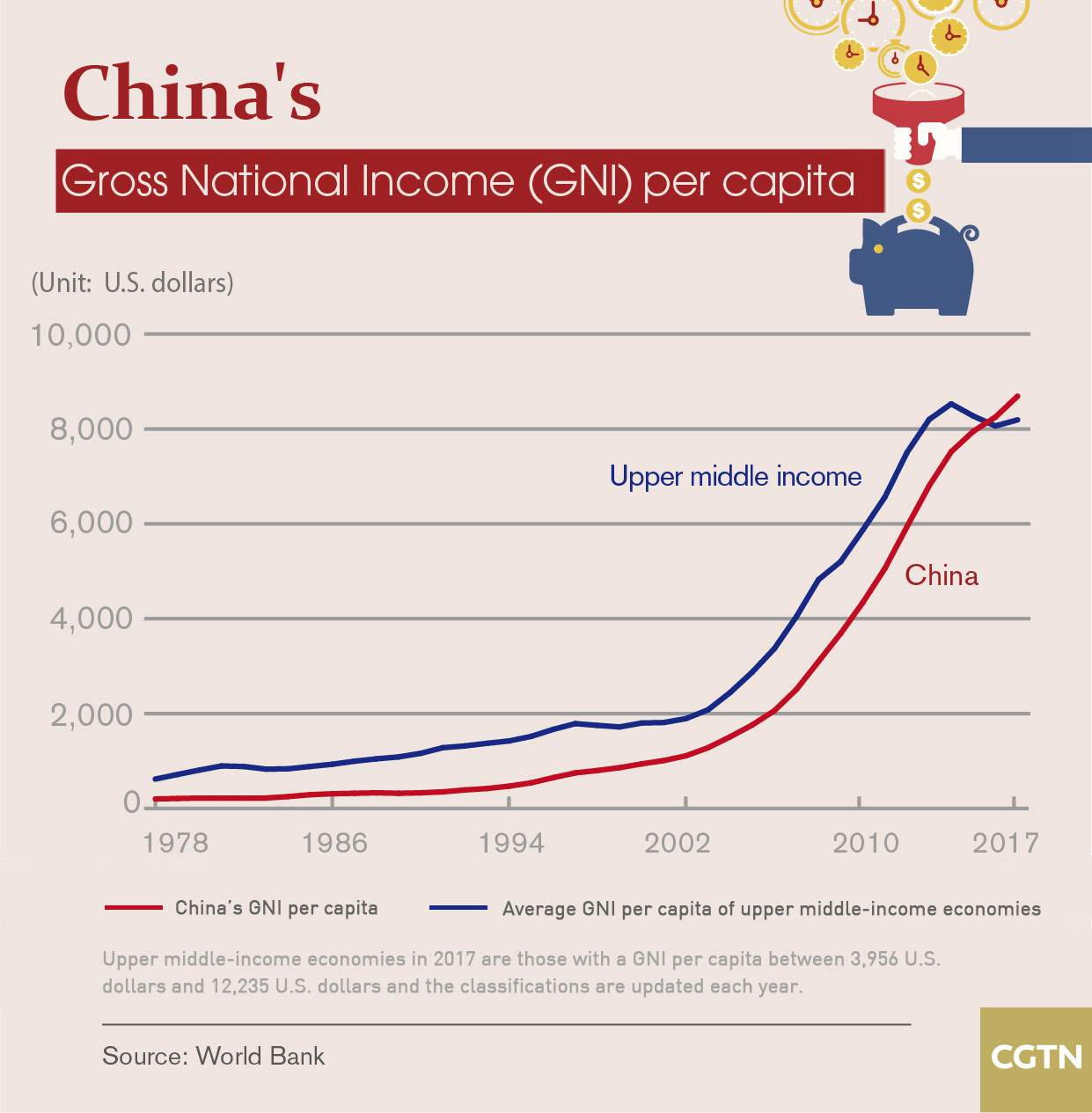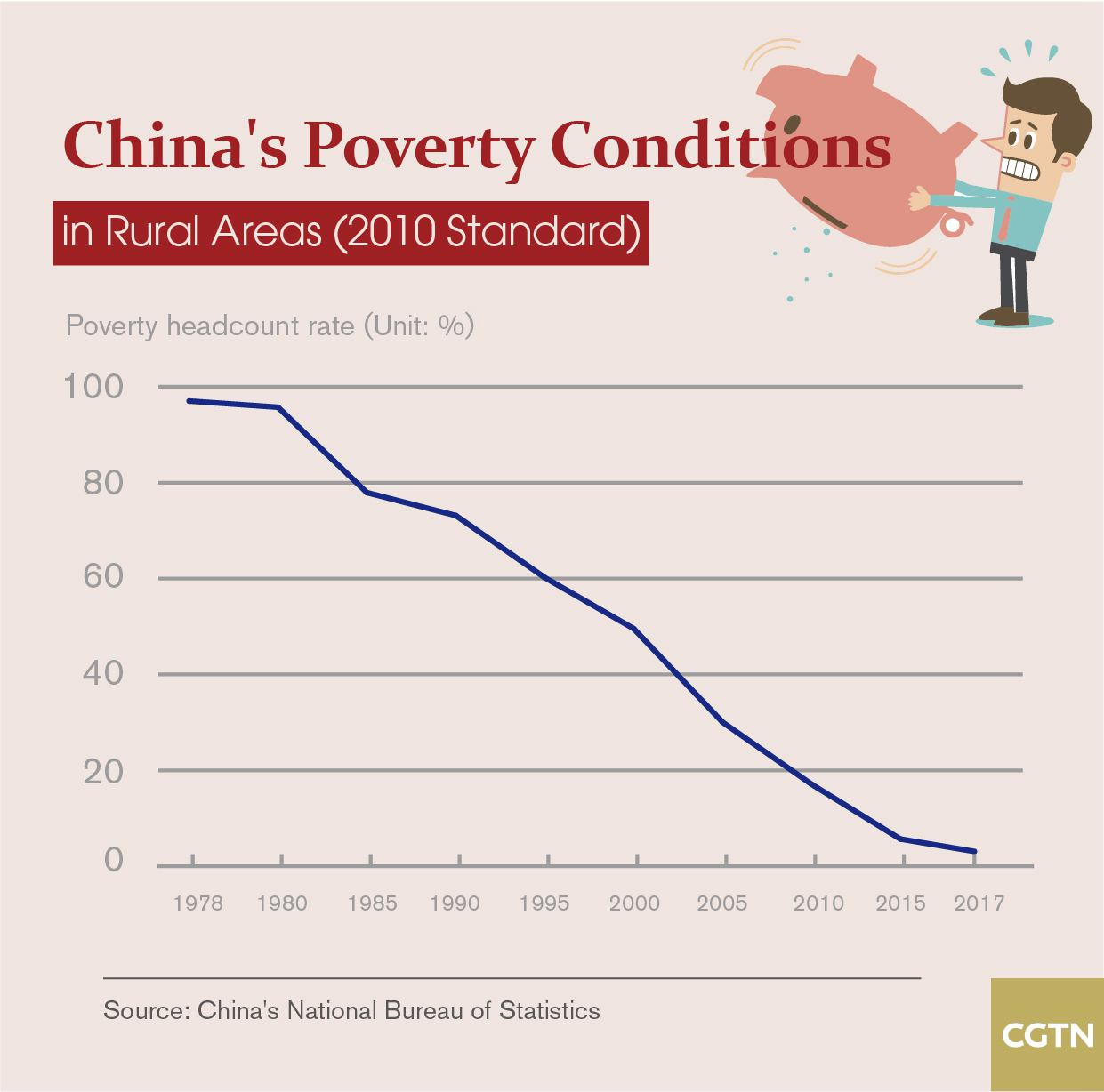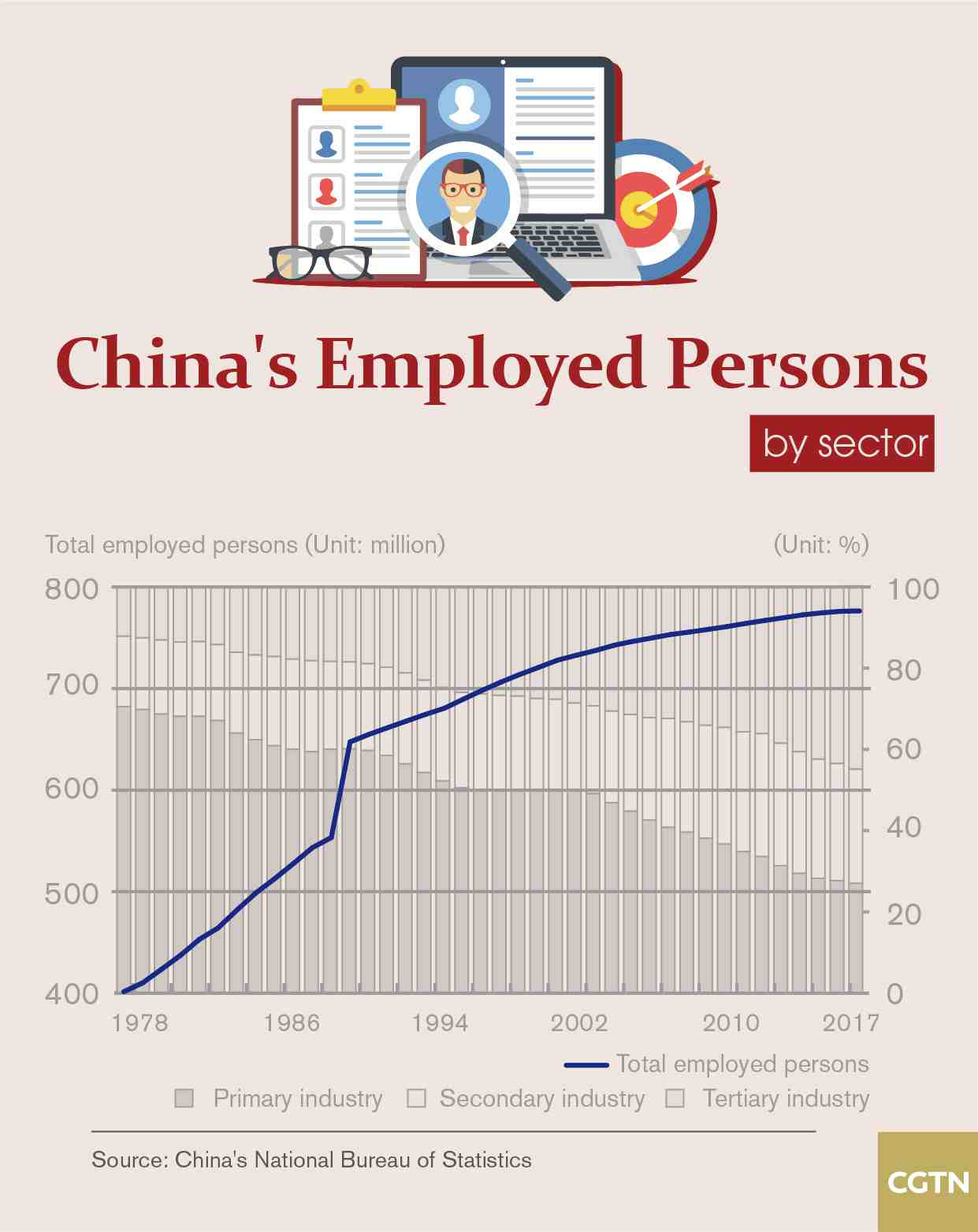
Business
09:28, 15-Dec-2018
China's 40 years: Key numbers in changing living standards
Updated
23:05, 18-Dec-2018
By Zhang Huimin

Since it started its reform and opening-up process 40 years ago, China has seen unprecedented economic, societal and cultural transformations.
Figures talk.
China's per capita disposable income stood at 25,974 yuan (3,768 U.S. dollars) in 2017 after deducting price factors, up 22.8 times in the last 40 years, according to the National Bureau of Statistics (NBS). In 2017, the national per capita consumption expenditure grew by an average 7.8 percent year on year from 1978 to 2017 to reach 18,322 yuan, after deducting price factors, with service consumption in fields like education, health and culture booming.

China's gross national income (GNI) per capita increased from 200 U.S. dollars in 1978 to 8,250 U.S. dollars in 2016, which exceeded the average of the upper-middle income countries and ranked 95th among the 217 countries and regions announced by the World Bank.
China's Engel's coefficient in 2017 stood at 29.3 percent, down by 34.6 percent over 1978. The per capita income from wages of urban residents in 2017 saw an average increase of 11.5 percent year on year to 22,201 yuan in the last 40 years, while its proportion in the total per capita income fell by 32.8 percent to 61 percent.
At the beginning of the reform and opening-up process, the income of rural residents was characterized by collective action in principle. Forty years later, household operation earnings, salary and transfer income contribute to their income.
Basic living conditions have also improved significantly in the last 40 years. In 2017, the per capita housing construction area of urban and rural residents was 36.9 and 46.7 square meters respectively, an increase of 30.2 and 38.6 square meters respectively compared with 1978.

China has witnessed a substantial drop in the poverty rate during the past four decades, especially in rural areas, thanks to the reform and opening-up.
According to data from the NBS, the poverty rate, the proportion of people living below the Chinese poverty line, had fallen among the rural population from 97.5 percent in 1978 to 3.1 percent at the end of 2017, based on 2010 standards.
About 740 million rural residents have been lifted out of poverty, reducing the number of impoverished to only 30.46 million over the past 40 years. And China aims to win the battle against poverty by 2020 to build a moderately prosperous society in all aspects.

The quality of employment has also been continuously improved in the last four decades.
According to the NBS, China's employed population increased from 401.52 million 40 years ago to 776.4 million in 2017. People employed in the tertiary industry accounted for 44.9 percent at the end of 2017 – 32.7 percent higher than that in 1978, showing that the tertiary sector has become the main channel for employment.

SITEMAP
Copyright © 2018 CGTN. Beijing ICP prepared NO.16065310-3
Copyright © 2018 CGTN. Beijing ICP prepared NO.16065310-3